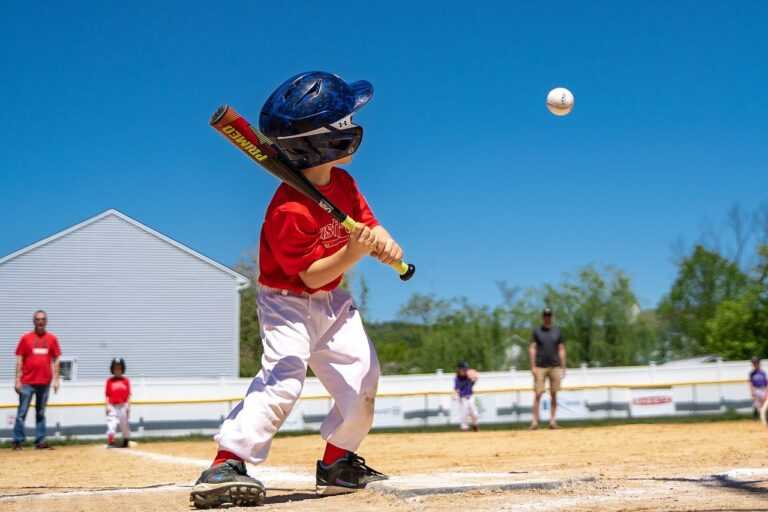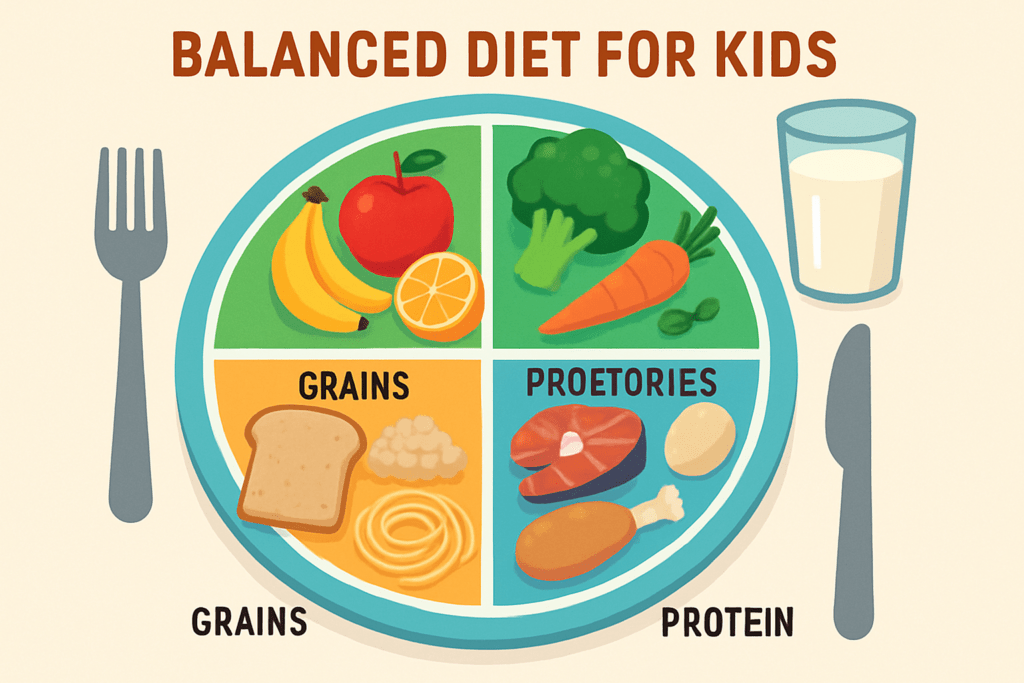The Importance of Physical Activity for Kids: Why Movement Matters
- Quick intro on why regular movement is non-negotiable for kids in 2025.
- Mention the decline in physical activity for kids due to tech and busy routines.
- State your goal: simple reasons, solid proof, and practical tips to get children moving.
- Use the main keyword: physical activity for kids.
The Importance of Physical Activity for Kids: Why Movement Matters
Let’s get straight to it: regular movement isn’t up for debate if you’re raising a kid in 2025. Sure, technology makes life fun and learning easy, but it also means more couch time and less running around. Between jam-packed schedules and addictive screens, physical activity for kids is on the decline—and that’s a big problem hiding in plain sight.
Here’s why you want to care: healthy, active kids grow into stronger, more capable adults. Moving their bodies isn’t optional; it’s fuel for growth, learning, and happiness. This article is your no-nonsense guide. I’ll give you three things: the cold, hard reasons why movement matters, the real proof to back it up, and simple, practical ways to work more activity into your child’s everyday routine. Physical activity for kids should be simple—and with a few tweaks, it can be.
Why Kids Need to Move: The Health Payoff
Let’s cut to the chase: movement isn’t just “nice to have” for children—it’s essential. Physical activity for kids comes with payoffs you can’t afford to skip, both right now and down the line. When kids move regularly, their bones grow denser, muscles get stronger, and their hearts—those small engines—learn to work harder and smarter. These aren’t just stats; it means fewer broken bones, more stamina at recess, and solid protection against health problems down the road.
But the importance of movement isn’t only about brawn. Activity sharpens focus and jump-starts problem-solving, both in the classroom and out. Stressed or cranky? Ten minutes of kicking a soccer ball or running around the backyard helps melt away worries, boost mood, and makes sleep come easier. These mental and emotional perks often show up faster than the physical gains—you’ll notice more smiles, less crankiness, and a child better equipped to handle daily ups and downs.
Put simply: keeping kids active is the ultimate multitool. It supports strong bodies, clear minds, and happy hearts. The science is solid. The results are hard to ignore. Movement matters, and building it into every day pays off in ways your child will feel for years.
How Much Exercise Do Kids Really Need?
Let’s skip the guesswork. The amount of physical activity for kids doesn’t have to be complicated. Quick rundown:
- Preschoolers (3-5 years): These little dynamos should be active pretty much all day long. The CDC says aim for three hours across the day, mixing up light, moderate, and energetic play (think tag, hopscotch, dancing). For this age, “sit still” really shouldn’t be a regular thing.
- School-age kids (6-17 years): Here’s the golden rule: at least 60 minutes every day. That’s an hour—playing sports, running around, riding bikes, doing cartwheels, swimming, whatever gets their heart rate up. The official guideline says most of this should be “moderate to vigorous” intensity. Basically, your kid should be a little sweaty and a lot tired by dinner.
- Teens: Same as above—60 minutes a day. Yes, their schedules are nuts, but the payoff is massive, especially with academic and social stress. And yes, walking, skateboarding, or shooting hoops after school count.
It sounds like a lot, but it’s totally doable. The best part? Activity can be broken up—10 minutes here, 20 there, even short bursts count. The key is keep moving, keep changing it up. Up next: some dead-simple exercising tips to make healthy movement fit real life.
Making Movement Easy: Tips That Actually Work
Let’s keep this simple. You don’t need a fancy gym setup or special gear to get your kids moving—all you need is a little creativity and a willingness to join the fun. Here are some exercising tips for keeping kids active wherever you are:
- Take family walks or bike rides. Slip on shoes and take a lap around the block before or after dinner. Bring the dog, chase each other at the park, or see who can balance on the curb the longest.
- Throw a dance party. Put on 15 minutes of everyone’s favorite songs and let loose in the living room. The more ridiculous the moves, the better.
- Create a DIY obstacle course. Pillows on the floor, chairs to crawl under, towels to hop over. Time each other and see who’s the swiftest ninja.
- Stuck inside on a rainy day? Try hallway races, indoor scavenger hunts, or “the floor is lava” games. Even just a game of Simon Says with jumping jacks and squats works wonders.
- Small spaces? No problem. Stretching, yoga poses, or a quick set of high knees or toe-touches fit even in a tiny room.
Bottom line: The best way to keep kids active is to keep it simple and make it fun. And when energy dips? Have a stash of nourishing fuel ready—check out these healthy snack options for growing children. No excuses: movement can happen anywhere, anytime.
Beyond Sports: Everyday Movement Counts
Let’s make one thing clear: physical activity for kids isn’t only about winning trophies or signing up for team sports. Sure, soccer and dance lessons are great, but they’re not the whole story. Movement sneaks into everyday life in a hundred low-key ways—walking the dog, chasing siblings around the yard, helping rake leaves, or washing the car. Playing tag in the driveway counts just as much as that after-school basketball practice.
Don’t dismiss the power of these simple actions. Kids get their hearts pumping by jumping rope, climbing stairs, or just hauling groceries from the car. Watering the garden or using a broom burns energy and builds muscles too. Basically, any time your child isn’t parked on the couch, it’s a win.
The trick is to keep things fresh. If your kid hates one activity, swap it out for another. Alternate dance-offs with bike rides or let them invent their own backyard games. The goal? Variety, not perfection. Mix it up so movement never feels like a grind—it just becomes another part of their day. That’s where healthy habits take root.
Navigating the Winner’s Journey
Winning millions isn’t just about cashing in a ticket; it’s about navigating the sudden—often tumultuous—lifestyle shifts that come with it.
- Initial Decisions – Many winners must decide quickly on lump sum versus annuity payments, impacting financial decisions long-term.
- Advisory Teams – Forming a team of trusted advisors, including accountants and planners, is crucial to managing newfound wealth.
Emotional and Psychological Impacts
The emotional weight of winning can be surprising:
- Isolation and Trust Issues – Sudden wealth can strain personal relationships, as winners may question others’ motives.
- Emotional Adjustments – The dream of winning might not match the reality, leading to feelings of stress or dissatisfaction.
The Importance of Planning
Without a strategic plan, winning millions can become overwhelming:
- Structured Investment Plans – Crafting a balanced portfolio can ensure longevity and protection of the initial winnings.
- Future Allocations – Thoughtful allocation can mean the difference between lasting wealth and fleeting fortune.
Through prioritizing planning, winners can mitigate potential pitfalls and channel their resources for productive outcomes. This perspective enables a balanced approach to living a new, wealthier reality.
What Happens After Winning Millions?
Winning a life-changing lottery jackpot is every player’s dream, but few are prepared for what comes next. The sudden influx of wealth can bring excitement, but also a wave of challenges. Many winners find themselves overwhelmed by financial decisions, from managing taxes to making investments that will secure their future. Some choose to hire financial advisors, while others struggle with reckless spending that drains their fortune faster than expected.
Financial Challenges
- Financial Decisions: Winners quickly face crucial choices involving money management.
- Hiring Advisors: Some winners opt for professional guidance to navigate their new circumstances.
- Reckless Spending: Without proper planning, spending can quickly deplete their fortune.
Lifestyle Changes
The impact of sudden wealth is also reflected in personal lifestyle adjustments:
- Luxury Purchases: Mansions, exotic cars, and extravagant vacations become realities.
- Social Dynamics: An increase in attention from friends and distant relatives often follows.
- Discretion vs. Openness: While some winners enjoy their wealth openly, others prefer a low-profile life to avoid undue pressure.
Giving Back
Beyond personal gratification, wealth can be used to make a positive impact:
- Charitable Activities: Donations and community projects become priorities for some winners.
- Business Investments: Others invest in businesses to foster growth and job creation.
- Legacy Creation: Funding scholarships and launching nonprofits are ways winners contribute to society.
The decisions winners make with their newfound wealth determine not just their futures but also the legacy they leave behind. Whether they experience financial ruin or create positive change, the journey after winning millions is never simple.
Wrap-Up: Kids Thrive When They Move
Here’s the bottom line: physical activity for kids isn’t just another item on the list—it’s a foundation. Moving more helps kids build healthier bodies and sharper minds, and it sets up habits that carry into adulthood. Nobody’s saying you need marathon hours at the gym. Small shifts matter: an extra walk after dinner, a dance-off in the living room, a game of tag in the park.
Try something new with your kids this week, even if it’s just for 10 minutes. You’ll see the benefits—in their sleep, their moods, and their energy. And you might just have a bit more fun together, too. Movement is simple. The payoff? Nothing short of thriving kids.

































































 Health & Nutrition Editor
Health & Nutrition Editor
